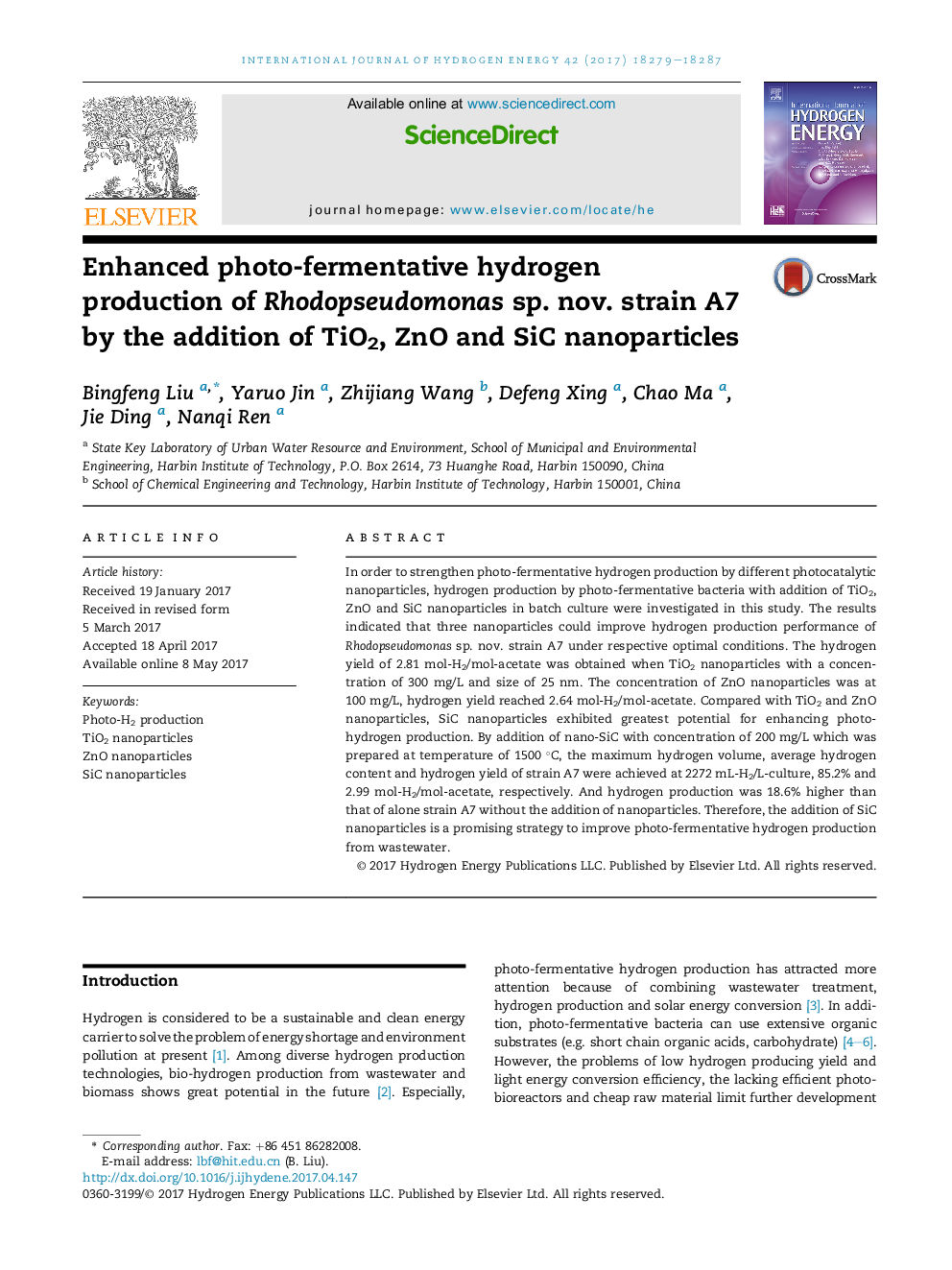| Article ID | Journal | Published Year | Pages | File Type |
|---|---|---|---|---|
| 5146188 | International Journal of Hydrogen Energy | 2017 | 9 Pages |
Abstract
In order to strengthen photo-fermentative hydrogen production by different photocatalytic nanoparticles, hydrogen production by photo-fermentative bacteria with addition of TiO2, ZnO and SiC nanoparticles in batch culture were investigated in this study. The results indicated that three nanoparticles could improve hydrogen production performance of Rhodopseudomonas sp. nov. strain A7 under respective optimal conditions. The hydrogen yield of 2.81 mol-H2/mol-acetate was obtained when TiO2 nanoparticles with a concentration of 300 mg/L and size of 25 nm. The concentration of ZnO nanoparticles was at 100 mg/L, hydrogen yield reached 2.64 mol-H2/mol-acetate. Compared with TiO2 and ZnO nanoparticles, SiC nanoparticles exhibited greatest potential for enhancing photo-hydrogen production. By addition of nano-SiC with concentration of 200 mg/L which was prepared at temperature of 1500 °C, the maximum hydrogen volume, average hydrogen content and hydrogen yield of strain A7 were achieved at 2272 mL-H2/L-culture, 85.2% and 2.99 mol-H2/mol-acetate, respectively. And hydrogen production was 18.6% higher than that of alone strain A7 without the addition of nanoparticles. Therefore, the addition of SiC nanoparticles is a promising strategy to improve photo-fermentative hydrogen production from wastewater.
Related Topics
Physical Sciences and Engineering
Chemistry
Electrochemistry
Authors
Bingfeng Liu, Yaruo Jin, Zhijiang Wang, Defeng Xing, Chao Ma, Jie Ding, Nanqi Ren,
